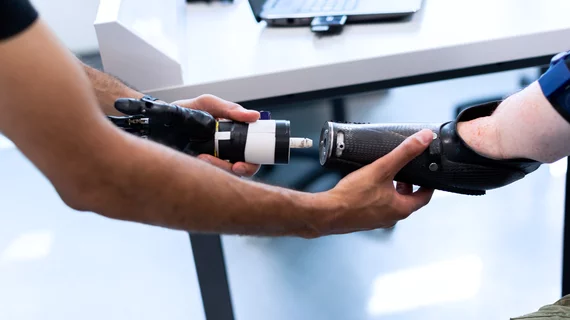Bioengineers have developed a brain-computer interface that replicates the sense of touch, allowing a robotic arm and hand to not only receive command signals from the brain but also send back signals of stimulation.
In tests, a study participant implanted with electrodes in two regions of his brain halved the time it took him to grasp, lift and place objects on a target, from a median 20.9 seconds without the stimulation to 10.2 seconds with.
The work was conducted at the University of Pittsburgh and is described in a study published May 20 in Science.
“Faster times were primarily due to less time spent attempting to grasp objects, revealing that mimicking known biological control principles results in task performance that is closer to able-bodied human abilities,” write PhD candidate Sharlene Flesher and colleagues in the study abstract.
Meanwhile the participant, whose spinal cord was injured in a car accident, tells Pitt’s news division that, even though the sensation “isn’t ‘natural’—it feels like pressure and gentle tingle—that never bothered me. There wasn't really any point where I felt like stimulation was something I had to get used to. Doing the task while receiving the stimulation just went together like PB&J.”
The researchers note the critical role of eyesight in complementing the tactile aid of the BCI.
“We didn’t want to constrain the task by removing the visual component of perception,” says co-senior author Robert Gaunt, PhD. “When even limited and imperfect sensation is restored, the person’s performance improved in a pretty significant way.”
Gaunt adds that the technology still has far to go before it’s ready for clinical translation—the BCI needs to render a more natural sense of touch and integrate with a fitted prosthetic—but “the closer we can get to recreating the normal inputs to the brain, the better off we will be.”

